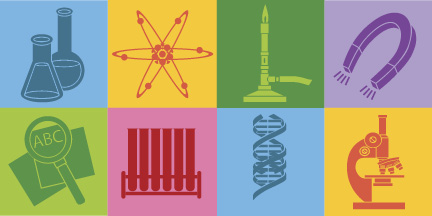So, You Say You Want to Make a Difference
One of the most rewarding things that ever happened to me in the field of fluid power was when a high school student spoke to me after a two-hour pneumatic training session for FIRST robotics mentors. She told me that she had learned more about physics in those two hours than she had learned in all her classes in high school.
Now, I am not saying that I am a particularly good teacher. I know of many that are much better than I am. What was exciting was that this girl had come to see the interaction between fluid power and one of the other physical sciences. This is something that has fascinated me for some time—how we, as fluid power professionals, have to be conversant, if not competent, in almost every field of science.
Every year, here at the steel mill, we have some apprentices come in from local colleges to help out with some of the work. In the group there are usually a few who are studying some field of engineering. I tend to seek them out and try to spend some time talking to them about the advantages of fluid power. All of them have been environmentally conscious and, as the energy project manager as well as the resident fluid power specialist, I have had the opportunity to draw them into discussions about the impact of fluid power on energy transfer. I often elicit their help in solving some engineering problem and use the opportunity to talk about the various fields of science required to properly apply fluid power. Without exception, they have been surprised at all that is involved when applying a fluid power system.
Those of you who have been following my articles know that I have a particular interest in energy, and we will talk about that a little bit later, but I also want to point out some of the other fields of science that are a requirement for the fluid power professional.

Thermal Transfer: We have to be able to understand the nature of energy in the way it is released as heat when not used for mechanical work. This in turn involves knowing about specific heat and the ability of various materials to capture, retain, transfer, and release heat energy.
Physics: We deal with the acceleration and deceleration of loads. We calculate the velocity of fluid through valves and connectors. We recognize the frictional effect that produces pressure losses in dynamic systems. We partner with Blaise Pascal when using his formula of F = PA.
Geometry: Pythagoras is an old friend. We could not work without him. His A2 + B2 = C2 is fundamental to our ability to determine angular forces, whether from a cylinder or within the workings of a piston pump or motor.
Gas Laws: We build on the work of Boyle and Bernoulli every time we size an accumulator, specify an air receiver, establish a vacuum, or calculate the pressure drop through an orifice.
Chemistry: Some of us have learned the hard way that you should not mix different types of hydraulic or lubricating fluid. The chemical reactions can create acids that can eat the chrome off valve spools. The wrong fluid can interact with seals and either cause them to disintegrate, stiffen, or expand.
Material Science: Following that last thought, we need to be aware of different materials that can be used for the different types of fluids. Do we use Nitrile, Teflon, Viton…? Our actuators and valves are made of steel, stainless steel, aluminum, bronze, and/or plastic, and we need to be aware of which is best for an application.
Electricity: The most common prime mover for fluid power is the electric motor. There are issues of power factor that we have discussed at length in earlier articles. We may be confronted with AC or DC, single-phase or 3-phase, 50 hertz or 60 hertz. We deal with power from fractional Wattage to hundreds or even thousands of horsepower.
Electronics: Have you taken a look at the latest certification from the International Fluid Power Society? It is the Electronic Specialist certification. Many thousands of dollars were put into developing this certification because the need was obvious.
Tribology: For those of you who may not be familiar with this term, it is the study of interacting moving surfaces. A fluid power professional has to know about dealing with the tight tolerances of parts that must be separated by a thin film of lubricant, sometimes very cold and sometimes very hot.
Alternative Energy: This is a very exciting new field where fluid power can have a tremendous future. Those who are harvesting energy from solar, wind, ocean waves, geothermal, or process generated heat are all finding that hydraulics is the preferred method for capturing, storing, and releasing that energy. Check out the article in the January/February 2011 issue entitled “Use It or Lose It” for an idea of one of the opportunities before us.
Ecology: Saving and harvesting energy certainly have environmental implications. It is just plain good stewardship to wisely use the resources we have. It is also important to “stop the leaks.” Every year it is estimated that as much oil is leaked out from improperly designed hydraulic systems as was dumped during the Exxon Valdez oil spill. This not only should be stopped; it can be stopped when properly trained fluid power professionals use the correct connectors and conductors as well as the right sealing material.
Economics: Much of what has been mentioned above has a direct economic impact. Here at the steel mill, my predecessor helped save many thousands of dollars by stopping leaks, properly filtering our fluids, and helping to choose components that were properly suited for the work to be done. Many thousands more have been saved by making the existing systems more efficient. Often times the right question is not, “What will it cost to do this?” but, “What will it continue to cost if we don’t do it?”
Math: My Dad once asked me what I did as a fluid power professional. He had done a fair amount of carpentry in his life and so I gave him this illustration. I said, “What if someone came to you and asked you to build him a table? You would get an idea of what he needed, maybe from some good drawings or more likely from a pencil sketch on a piece of scratch paper. You would then take the information and go out to your workshop where you have your tools. You have various saws, chisels, sanders, and such, as well as some homemade tools that you had developed to make your work more efficient. You would set to work and would produce the table doing what the customer was not able to do on his own.” I said, “That is exactly what we do. Someone comes to us and asks for a fluid power solution to a problem. We are given an idea of what the need is and then we go off to the workshop where we have the tools to do the job. Only our tools are mathematical formulas that we use to meet the need.” As fluid power professionals, we apply the mathematics of the sciences listed above to properly implement fluid power solutions.
So, you say you want to make a difference? You want to protect the environment and save energy? You want to reduce operating costs? You want to do something challenging that requires many disciplines? You can begin and end with Fluid Power.



Just Great !!